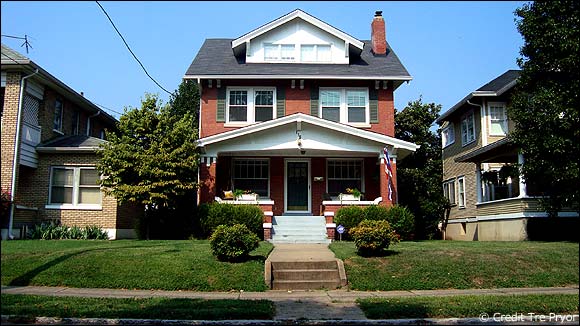Deciding whether to embark on home improvements to a rental property can be a complex choice that goes beyond enhancing aesthetics. As tenants, personalizing your living space might clash with concerns about financial investment and the allowances on a rental application. While the idea of turning a rental into your own cozy haven is enticing, weighing the pros and cons before proceeding with your home improvement is essential.

Read on to discover the concerns surrounding home improvements to a rental property, such as budgeting and rental boundaries.
Making Home Improvements to a Rental
Home improvements, whether that’s choosing a new bed design or painting the walls a different color, require some extra thought for a rental property. Many people have to live with their rental home’s architectural design since landlords don’t allow any physical changes, such as refurbishing a room.
Before planning a home improvement project, you must consult your landlord and review the rental documents to understand what type of changes are allowed. It’s also worth considering your budget before changing a property you might not stay in for the long term.
Pros of Home Improvements in Rental Homes
Refurbishing a rental home has various benefits for your comfort, and it’s always something to consider when you grow tired of dull designs. It’s better to live in a space where you’re comfortable and happy.
Below are the pros of improving your rental home:
Enhanced Comfort and Enjoyment
While a rental property might not be your forever home, there’s something satisfying about creating a space that reflects your personality and aesthetics. Simple improvements like a fresh coat of paint can instantly transform a generic space into a vibrant environment. You could also update your lighting or pick the perfect hardwood flooring that promotes relaxation and sparks life into the rental home.
Personalization
Similar to enhancing your comfort and enjoyment, personalization is another benefit that could create a sense of belonging. Moving into a space decorated by someone else and reflecting on their taste might not be comfortable at first, hence the urge to personalize each room to your personal style.
Instead of making permanent changes, invest in some removable wallpaper or buy home decor that matches your aesthetic without causing lasting alterations.
Increased Property Value
Making home improvements to a rental extends beyond your immediate living comfort. One notable advantage is the potential to increase the property’s value, which can positively impact you and the landlord. While you might not reap the benefits directly, it may encourage your landlord to allow upgrades.
Using energy-efficient appliances and modern fixtures will instantly boost the value, making your landlord more likely to agree to your home improvement project.
Cons of Home Improvements in Rental Homes
The advantages might sound favorable, but you should always consider the downsides before using your budget for a home improvement project.
Here are the cons of doing home improvements in a rental property:
Financial Investment
As you contemplate the upgrades you want to make, it’s essential to consider the costs and whether they align with your long-term financial goals. You must balance the investment and benefits you’ll gain throughout your tenancy, including how long you plan on staying in that property.
It’s not worth spending your budget on several home remodeling stages if you change your mind in the future. Changes will contribute to your overall comfort, but they won’t result in a direct return on investment when it’s time to find another home.
Landlord Approval
Some landlords are strict when it comes to changing the living space. Since they own that property, they can change the interior and exterior whenever they please, meaning you don’t have as much freedom when decorating. Landlords want to protect the property’s integrity or future rental value, and without reasonable enhancements on your behalf, they are more likely to decline any home improvements.
Temporary Stay
In many cases, staying in a rental property is only short-term because people will eventually become homeowners. Choosing a rental home to live in for a few months to a year means home improvements aren’t the smartest investment. There’s also the risk of complications with the landlord that cause you to move out, meaning your refurbishments were a waste of time and money.
Reverting Changes
Most rental agreements state that tenants are expected to return the property to its original state upon moving out. This means you would have to undo the hard work you put into changing the place. From repainting walls to dismantling custom-built furniture, the process can be time-consuming. Even though you can’t buy those fancy curtains for your home or change a bedroom’s design, you can adorn the area with small decor to make it more homely.
Final Thoughts
Balancing the allure of making home improvements to a rental and the long-term investment benefits can be challenging. All you need to consider is your budget, length of stay, and rental agreement with the landlord. By evaluating these factors, you can transform your rental home into a personalized space without causing yourself future stress.



